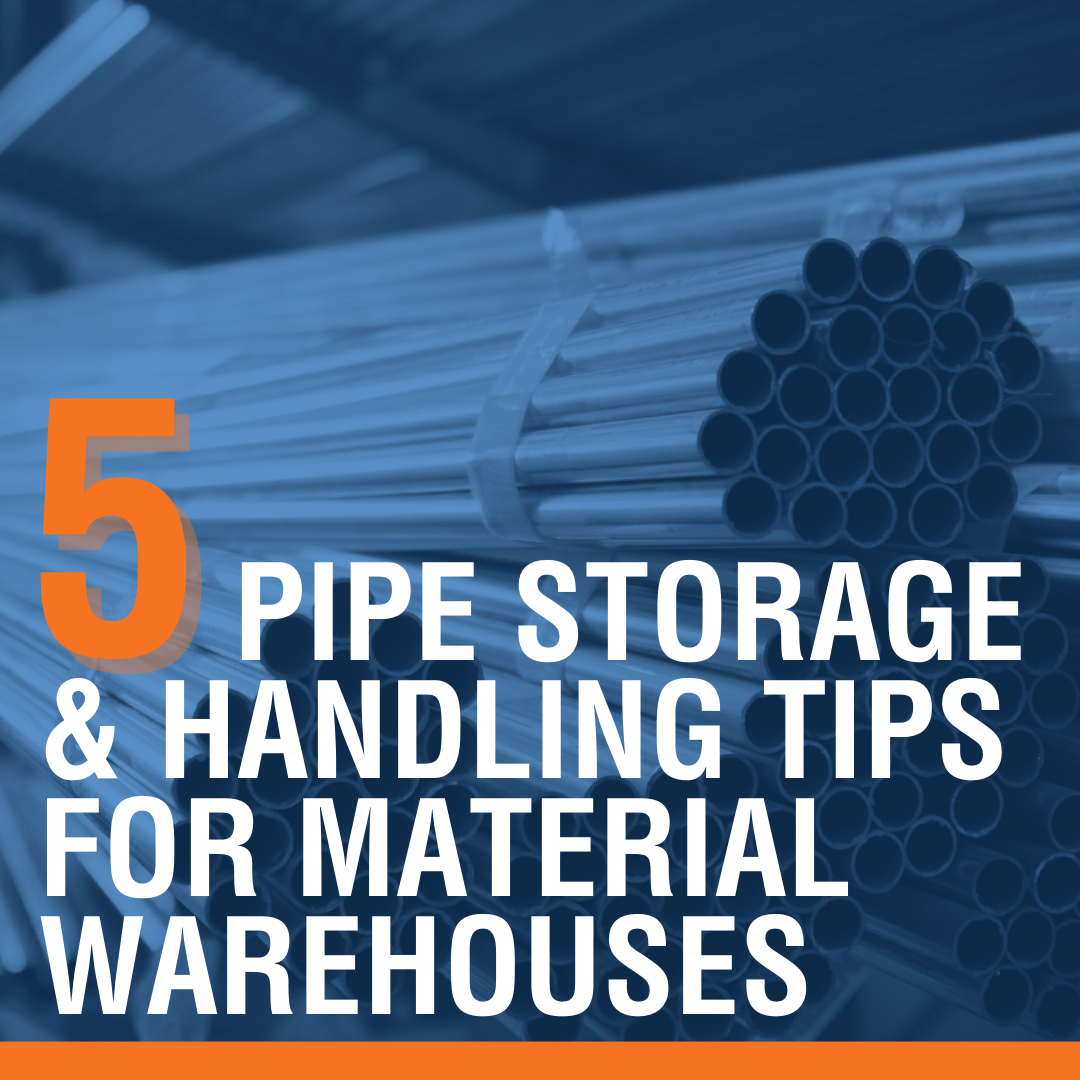We use cookies to make your experience better. To comply with the new e-Privacy directive, we need to ask for your consent to set the cookies. Learn more.
5 Pipe Storage and Handling Tips for Materials Warehouses
Occupational Safety and Health Administration (OSHA) standard 1910.176(b) requires employers to store materials securely. “Storage of material shall not create a hazard,” the standard says. Complying with this standard can be a challenge for products that seem designed to roll away—as is the case with pipes of all sizes and materials.

Unfortunately, the OSHA standards on material handling and storage don’t offer much advice on pipe storage. “Bags, containers, bundles, etc., stored in tiers shall be stacked, blocked, interlocked, and limited in height so that they are stable and secured against sliding or collapse,” the standard says. Pipe falls under the ambiguous category of “etc.,” and it’s not a material that stacks well—regardless of blocking or height limitations.
So what’s the safest way to store pipe in a materials warehouse or electrical wholesaling operation? Here are a few ideas for safe, efficient pipe storage.
5 Pipe Storage Tips for Safety and OSHA Compliance
The ideal pipe storage solution keeps pipes secure, limits storage footprint, and simplifies access. These options deliver on all three criteria.
1. Store pipes vertically.
The simplest way to prevent rolling is to store pipes upright. Vertical pipe storage racks may also provide high-capacity storage with a smaller footprint than horizontal racking. Look for pipe racks with support bars at frequent intervals—that way you can store various lengths, or even cut pieces, within the same system.
The Vertical Material Rack from BHS, Inc. features four rows of vertical crossbars, accounting for pipes of most common lengths and circumferences. Two stock models are ideal for most rigid conduit and metal piping, while custom designs are available to match any application.
Buy Vertical Material Racks here.
2. Keep pipes secure with an anti-skid base.
Vertical pipe racks usually include a base barrier to keep pipes from sliding down and out of their slots. But to simplify access and enhance storage security, consider adding an anti-skid material to the base of any vertical pipe racking system.
Anti-skid surfaces keep pipes from clumping at the front of the base, making it easier for users to select individual units. They also add an extra layer of stability, helping to comply with OSHA’s requirement to keep materials “stable and secure against sliding or collapse. Vertical Material Racks from BHS ship stock with anti-skid rubber lining the base.
3. Use cantilever racks for forklift access.
If you use forklifts to handle bundles of pipe, vertical storage may not be the best choice. Instead, opt for cantilever pipe racks. Also common for lumber storage, cantilever racks store pipe on rack arms that extend 90 degrees outward from the frame. This design simplifies access for common material handling equipment like lift trucks.
Cantilever Carts from BHS feature fully adjustable, 39-inch rack arms so you can configure your unit for pipes of all sizes.
4. Use multi-compartment racks to organize stock.
It’s hard to fill an order when you have to search through stock to find the right product. Whether you opt for vertical or horizontal pipe storage, choose racks with enough compartments to keep your stock organized.
Standard Vertical Material Racks separate 10 slots with steel crossbars, so it’s easy to separate pipe by size and material. Cantilever Carts ship with four sets of shelf arms, and more are available on request. These adjustable shelves allow users to configure carts to match their stock, while keeping like with like from one shelf to the next.
5. Combine storage and handling with high-capacity pipe carts.
While most operations require some amount of fixed pipe racking, you can also store smaller collections—or orders bound for delivery—on high-capacity pipe carts and rolling racks. That allows operators to move stock to packing areas in bulk, and gives your operation more flexible space utilization.
For bulk bundles of pipe—especially rigid conduit—choose a Conduit Carrier Cart. These dedicated conduit-handling solutions are available in a variety of models, from a forklift-compatible cart with a 6,000-pound capacity to the Tilting Elevator Conduit Cart, which angles pipe vertically to fit into narrow spaces.
Buy Conduit Carrier Carts here.
For more solutions to your pipe storage challenges, contact the BHS sales team at 1.800.BHS.9500.
